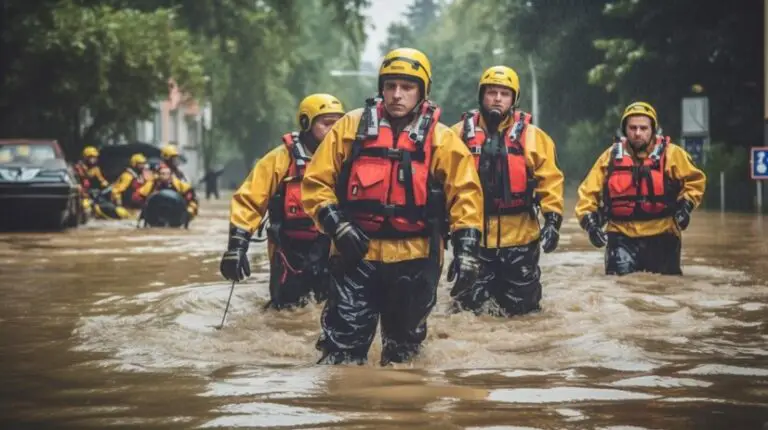Understanding the Changing Essential Needs of Teens: A Comparative Analysis of Today Versus Yesterday

Introduction: The teenage years are a pivotal period of growth, transition, and self-discovery. Over time, societal shifts, technological advancements, and evolving cultural norms have reshaped the essential needs of teens. In this article, we delve into the differences between the essential needs of today’s teens compared to those of previous generations and explore the underlying reasons for these changes.

Page Contents
- 1 Understanding the Changing Essential Needs of Teens: A Comparative Analysis of Today Versus Yesterday
- 2 5 multifaceted and empathetic approach
- 3 Meeting the evolving needs of today’s teens requires a multifaceted and empathetic approach that acknowledges their unique experiences and challenges. Here’s how parents, educators, and society as a whole can approach meeting these needs effectively:
- 4 8 Key Reasons
- 5 here are some main underlying reasons for the changes in the needs of today’s teens compared to yesterday’s teens:
- 6 Conclusion:
Understanding the Changing Essential Needs of Teens: A Comparative Analysis of Today Versus Yesterday

5 differences between the essential needs of today’s teens compared to previous generations
- Social Connectivity:
- Today’s Teens: Social media platforms, instant messaging apps, and online gaming have transformed how teens connect and communicate with peers. For many teens today, social connectivity is intricately linked to their online presence and digital interactions.
- Teens of Yesterday: In contrast, teens of previous generations relied more on face-to-face interactions, phone calls, and physical gatherings to foster social connections. Community and neighborhood bonds often played a more significant role in their social lives.
- Technology Integration:
- Today’s Teens: Technology is deeply integrated into the daily lives of today’s teens, serving as a primary source of entertainment, information, and communication. Smartphones, tablets, and laptops are ubiquitous tools that facilitate learning, socializing, and entertainment.
- Teens of Yesterday: While technology existed for previous generations of teens, its presence was less pervasive. Teens of yesterday may have relied more on traditional forms of media such as television, radio, and print publications for entertainment and information.
- Mental Health Awareness:
- Today’s Teens: There is a growing awareness and emphasis on mental health among today’s teens, with increased recognition of issues such as anxiety, depression, and stress. Access to mental health resources, support networks, and therapy options has expanded to address these needs.
- Teens of Yesterday: Mental health awareness was less prominent in previous generations, with stigma often surrounding discussions about mental illness. Access to mental health services may have been more limited, and seeking help for psychological concerns may have been viewed differently.
- Educational Pressure:
- Today’s Teens: Academic pressure and competition for college admissions are significant stressors for many teens today. High expectations from parents, peers, and society, coupled with the emphasis on standardized testing and academic performance, contribute to the pressure to excel academically.
- Teens of Yesterday: While academic expectations existed for previous generations, the intensity of educational pressure may have been different. Factors such as changes in curriculum, college admissions criteria, and career pathways may have influenced the academic landscape for teens of yesterday.
- Diversity and Inclusion:
- Today’s Teens: Diversity, equity, and inclusion are important values for many teens today, who advocate for social justice, equality, and representation. Issues related to race, gender identity, sexual orientation, and cultural diversity are central to their concerns and activism.
- Teens of Yesterday: While diversity and inclusion were also important, societal attitudes and awareness may have evolved over time. Teens of yesterday may have experienced different social dynamics and challenges related to identity, diversity, and discrimination.

5 multifaceted and empathetic approach

Meeting the evolving needs of today’s teens requires a multifaceted and empathetic approach that acknowledges their unique experiences and challenges. Here’s how parents, educators, and society as a whole can approach meeting these needs effectively:
- Open Communication and Supportive Relationships:
- Foster open and honest communication channels between teens and trusted adults, including parents, teachers, counselors, and mentors.
- Create a supportive and non-judgmental environment where teens feel comfortable expressing their thoughts, feelings, and concerns without fear of criticism or rejection.
- Build strong, trusting relationships based on empathy, respect, and understanding, allowing teens to feel valued and supported in navigating life’s challenges.
- Promotion of Mental Health and Well-being:
- Prioritize mental health education and awareness initiatives in schools and communities, providing resources, information, and support services to address issues such as stress, anxiety, depression, and self-esteem.
- Encourage self-care practices and coping strategies that promote mental and emotional well-being, such as mindfulness, relaxation techniques, physical activity, and creative expression.
- Destigmatize discussions about mental health and encourage help-seeking behavior by normalizing therapy, counseling, and other professional interventions as valuable tools for self-care and growth.
- Balanced Approach to Academic Success:
- Encourage a balanced approach to academic achievement that values personal growth, resilience, and well-being alongside academic excellence.
- Emphasize the importance of self-discovery, exploration, and learning experiences beyond traditional classroom settings, fostering curiosity, creativity, and critical thinking skills.
- Advocate for educational reforms that promote holistic student development, including flexible learning environments, project-based learning, and personalized pathways that cater to diverse interests and abilities.
- Cultivation of Inclusive and Empathetic Communities:
- Promote diversity, equity, and inclusion initiatives that celebrate individual differences, cultures, and identities, fostering a sense of belonging and acceptance for all teens.
- Create safe and inclusive spaces in schools, neighborhoods, and online communities where teens can express themselves authentically, challenge stereotypes, and advocate for social justice and equality.
- Provide opportunities for teens to engage in meaningful dialogue, collaborate on community projects, and participate in activism that promotes positive social change and collective well-being.
- Digital Literacy and Responsible Technology Use:
- Teach teens critical digital literacy skills, including media literacy, online safety, digital citizenship, and responsible use of technology, to navigate the digital landscape effectively and ethically.
- Encourage healthy screen-time habits and balance digital interactions with offline activities, social interactions, and outdoor experiences that promote well-rounded development.
- Foster conversations about the impact of social media, digital culture, and technology on mental health, relationships, and self-image, empowering teens to make informed choices and set boundaries that prioritize their well-being.
8 Key Reasons
here are some main underlying reasons for the changes in the needs of today’s teens compared to yesterday’s teens:
- Technological Advancements:
- Today’s teens have grown up in an era of rapid technological advancement, with ubiquitous access to smartphones, social media, and the internet. This has fundamentally altered the way they communicate, socialize, learn, and perceive the world around them, shaping their needs and priorities.
- Shifts in Social Dynamics:
- Societal norms, values, and expectations have evolved over time, influencing the social dynamics experienced by today’s teens. Changes in family structures, community dynamics, and cultural attitudes toward issues such as diversity, inclusion, and mental health have impacted their social needs and interactions.
- Globalization and Connectivity:
- Today’s teens are part of a globally interconnected world, where information, ideas, and cultures are readily accessible and shared across borders. This interconnectedness has broadened their perspectives, exposed them to diverse viewpoints, and influenced their sense of identity, belonging, and community.
- Evolving Educational Landscape:
- The educational landscape has undergone significant transformations, with changes in curriculum, teaching methodologies, and assessment practices shaping the academic experiences of today’s teens. Increased emphasis on standardized testing, college admissions, and career readiness has influenced their academic needs and aspirations.
- Rise in Mental Health Awareness:
- There is a growing recognition and awareness of mental health issues among today’s teens, with greater emphasis placed on addressing issues such as anxiety, depression, and stress. Increased awareness, access to information, and destigmatization efforts have led to shifts in how mental health needs are perceived and addressed.
- Cultural and Socioeconomic Factors:
- Cultural shifts, demographic changes, and socioeconomic factors play a role in shaping the needs and experiences of today’s teens. Issues such as globalization, urbanization, economic inequality, and cultural diversity impact their values, beliefs, and priorities, influencing their needs in various aspects of life.
- Environmental and Technological Influences:
- Environmental factors, including climate change, environmental degradation, and resource scarcity, as well as technological innovations such as artificial intelligence and automation, have implications for the future prospects and concerns of today’s teens. These factors shape their needs and aspirations in relation to sustainability, technology, and the future of work.
- Media and Cultural Influences:
- Media, entertainment, and popular culture have a profound influence on the attitudes, behaviors, and aspirations of today’s teens. Exposure to media representations, celebrity culture, and online influencers shapes their perceptions of beauty, success, and social norms, influencing their needs and desires in various domains.
These underlying reasons reflect the complex interplay of social, cultural, technological, and environmental factors that contribute to the changing needs and experiences of today’s teens compared to yesterday’s teens. Understanding these underlying dynamics is essential for effectively addressing the evolving needs of teens and supporting their well-being in a rapidly changing world.
By adopting a holistic and proactive approach that prioritizes communication, support, well-being, inclusivity, and digital literacy, parents, educators, and communities can better meet the evolving needs of today’s teens and empower them to thrive in a complex and interconnected world.
Conclusion:
The essential needs of teens have evolved in response to changing societal dynamics, technological advancements, and cultural shifts. Today’s teens navigate a digital landscape, grapple with mental health challenges, face academic pressures, and advocate for diversity and inclusion in ways that differ from previous generations. By understanding these differences and addressing the unique needs of today’s teens, parents, educators, and policymakers can better support their holistic development and well-being in an ever-changing world.






